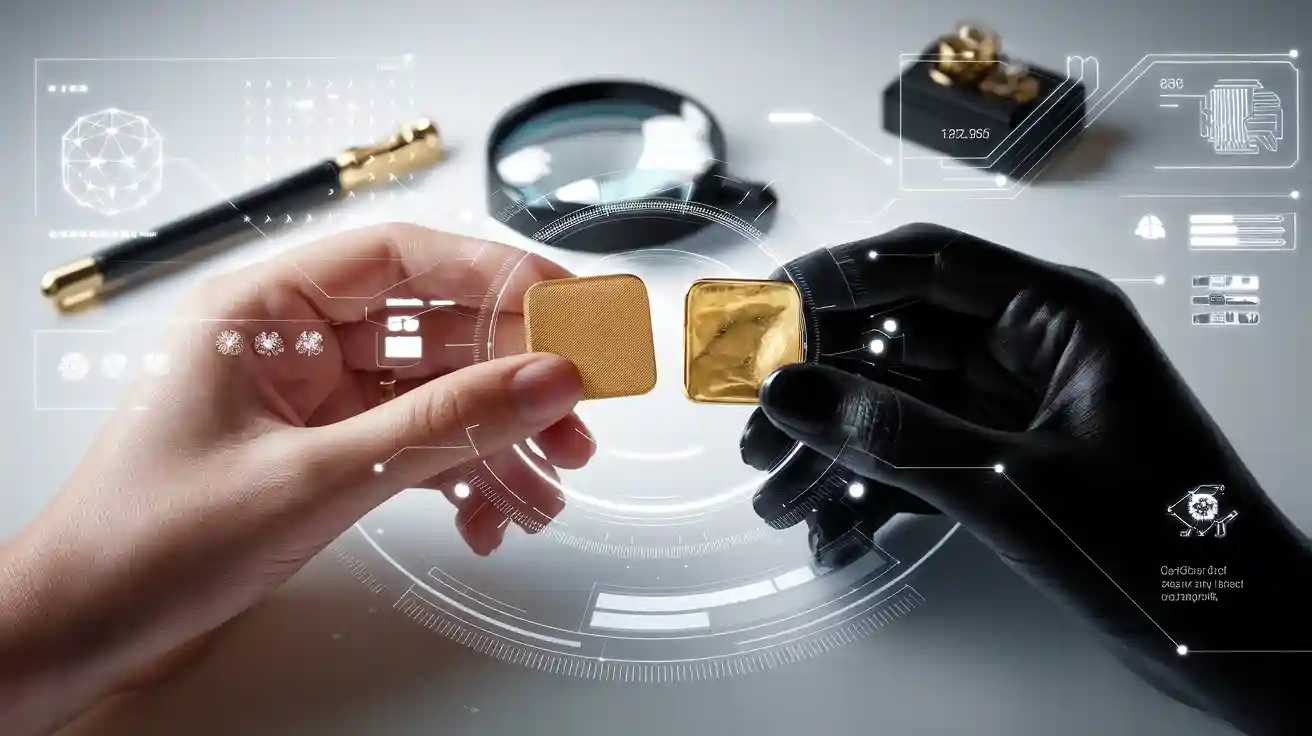
You might find many fake gold types in stores. These include Gold-plattiert, gold-filled, rolled gold plate, vermeil, and imitation gold made from tungsten or other cheap metals. Some sellers use fake hallmarks or labels to make fake items look real. Fake gold is common in costume jewelry and imitation pieces. Many fake items, like fake coins or bars, are sold online. The world market for imitation gold and costume jewelry is getting bigger, and fake products are a big part of it. Knowing how to spot fake gold and imitation gold helps you not buy fake or costume jewelry by accident. This guide gives you easy tips to find fake gold, fake metals, and imitation gold in costume jewelry.
Key Takeaways
Fake gold comes in many forms like gold-plated, gold-filled, vermeil, faux gold, and tungsten-filled gold, each with unique features.
Look for hallmarks such as ‘GP’, ‘GF’, or ‘925’ to identify fake or real gold; real gold usually has marks like ’14K’ or ’18K’.
Real gold feels heavy, has a warm, even color, and does not cause skin discoloration or react to magnets.
Simple tests like visual checks, magnet tests, and watching for skin marks help spot fake gold at home.
When in doubt, ask a professional jeweler to test your gold to avoid scams and protect your money.
Gefälschte Goldtypen

Plated Gold
Gold-plated jewelry is one of the most common fake gold types you will find in stores and online. Manufacturers make gold-plated jewelry by covering a base metal, such as brass or copper, with a thin layer of gold. You might see hallmarks like “GP,” “GEP” (Gold Electroplated), oder “HGE” (Heavy Gold Electroplate) stamped on these items. These marks show that the piece is not solid gold.
Gold-plated jewelry looks shiny at first, but the gold layer is very thin—usually only about 0.5 microns thick. Im Laufe der Zeit, the gold can wear off, showing the base metal underneath. Real gold does not fade or tarnish like this. If you scratch gold-plated jewelry, you may see a different color metal below the surface. This is a clear sign of imitation gold.
Tipp: Real gold feels heavier than gold-plated jewelry. You can also check for official hallmarks like “14K” oder “18K” to spot genuine gold.
Identification Method | Beschreibung | Key Indicators |
|---|---|---|
Look for marks like “GP,” “GEP,” oder “HGE” | These show the item is plated, not solid gold | |
Color Inspection | Real gold has a warm, even color | Plated gold may look too shiny or uneven |
Gewicht und Dichte | Real gold is much heavier than plated items | Plated jewelry feels lighter |
Feuerprobe | Acid will react with the base metal under the plating | Color change means it is not real gold |
Magnettest | Real gold is not magnetic | Attraction to a magnet means it is fake |
Gold-Filled
Gold-filled jewelry is another popular type of fake gold. It contains a thicker layer of gold than gold-plated jewelry, but it is still not solid gold. You may see hallmarks like “GF” oder “1/20 14K GF” on these pieces. This means that 1/20th of the item’s weight is gold, which is bonded to a base metal, usually brass.
Gold-filled jewelry lasts longer than gold-plated jewelry because the gold layer is thicker. Jedoch, it can still wear down over time, especially if you wear it every day. If you cut or file the jewelry, you might see the base metal inside. This is a sign of imitation gold.
Notiz: Gold-filled jewelry is a better choice than gold-plated jewelry if you want something that looks like real gold but costs less. Trotzdem, it is not the same as solid gold.
Gold Vermeil
Gold vermeil is a special kind of fake gold jewelry. It uses a base of sterling silver, which is 92.5% pure silver, covered with a thick layer of gold. The gold layer must be at least 2.5 microns thick and at least 10 karats in purity. You may see marks like “925” oder “Vermeil” on these pieces.
Gold vermeil looks and feels more like real gold than other types of imitation gold. It is more durable and better for people with sensitive skin because it uses real silver as the base. Jedoch, it is still not solid gold. Im Laufe der Zeit, the gold layer can wear off, especially if you wear the jewelry often.
Aspekt | Gold Vermeil | Gold-Plated Jewelry | Real Gold Jewelry |
|---|---|---|---|
Gold Layer Thickness | At least 2.5 microns (5x thicker) | At least 0.5 microns | Solid gold (no plating) |
Gold Purity | Minimum 10 Karats (41.7% Gold) | No minimum purity required | 10K, 14K, 18K, 22K |
Base Metal | Sterling Silver (92.5% pure silver) | Brass, Kupfer, Steel | Solid gold |
Haltbarkeit | More durable | Less durable | Most durable |
Hypoallergenic Quality | Better for sensitive skin | More nickel, higher allergy risk | Hypoallergen (depends on karat) |
Typical Lifespan | 1 Zu 5 years or longer | Shorter lifespan | Lang anhaltende |
Faux Gold Jewelry
Faux gold jewelry is a broad term for any jewelry that looks like gold but does not contain real gold. Makers use metals like brass, Kupfer, or even plastic to create these pieces. Faux gold jewelry is very common in costume jewelry. You may not find any hallmarks or stamps on these items.
Faux gold jewelry often has a bright, shiny finish that can look too perfect. The color may fade or change over time. If you wear faux gold jewelry, you might notice green or black marks on your skin. This happens because the base metals react with sweat and air. Real gold does not cause skin discoloration.
Alarm: If the price seems too good to be true, the jewelry is probably faux or imitation gold.
Fool’s Gold (Pyrite)
Fool’s gold, also called pyrite, is a mineral that looks like gold but is not gold at all. Pyrite has a shiny, metallic luster and a yellow color, which can fool people into thinking it is real gold. Jedoch, pyrite is much lighter and more brittle than real gold. It breaks easily and leaves a greenish-black streak when you rub it on a rough surface.
You will not find fool’s gold in most jewelry stores, but some imitation gold coins or nuggets use pyrite to trick buyers. Real gold is soft, heavy, and does not break or crumble like pyrite.
Brass and Copper Alloys
Brass and copper alloys are popular materials for making faux gold jewelry and imitation gold items. Brass is made from copper and zinc, and it can look very similar to gold. Some common brass alloys used in costume jewelry include Pinchbeck, Prince’s metal, and Tombac. These alloys have a bright, gold-like appearance but cost much less than real gold.
Alloy Name | Kupfer (%) | Zink (%) | Other Elements | Notes on Use and Appearance |
|---|---|---|---|---|
Pinchbeck | 89 oder 93 | 11 oder 7 | Keiner | Resembles gold closely; used in budget jewelry |
Prince’s metal | 75 | 25 | Keiner | Yellow color; used as imitation gold |
Admiralty brass | 69 | 30 | 1% Tin | Gold-like appearance; used in marine jewelry |
Aich’s alloy | 60.66 | 36.58 | Tin, Iron | Gold-like, designed for marine use |
Brass and copper alloys are easy to shape and polish, making them perfect for costume jewelry. Jedoch, they can tarnish and turn green over time. Real gold does not tarnish or change color.
Tungsten-Filled Gold
Tungsten-filled gold is a newer type of fake gold that is hard to spot. Makers use a core of tungsten, which is very dense and heavy, and cover it with a thin layer of real gold. This makes the item feel as heavy as real gold. Some fake gold bars and coins use this trick to fool buyers.
You might see fake hallmarks or grading labels on tungsten-filled gold items. These pieces can pass simple weight tests, but advanced tests like Röntgenfluoreszenz (RFA) or an acid test can reveal the tungsten inside. Tungsten-filled gold is rare in costume jewelry but more common in fake gold bars and coins sold online.
Notiz: Always buy gold bars and coins from trusted dealers. Fake gold types like tungsten-filled gold can be very convincing.
Spot Fake Gold
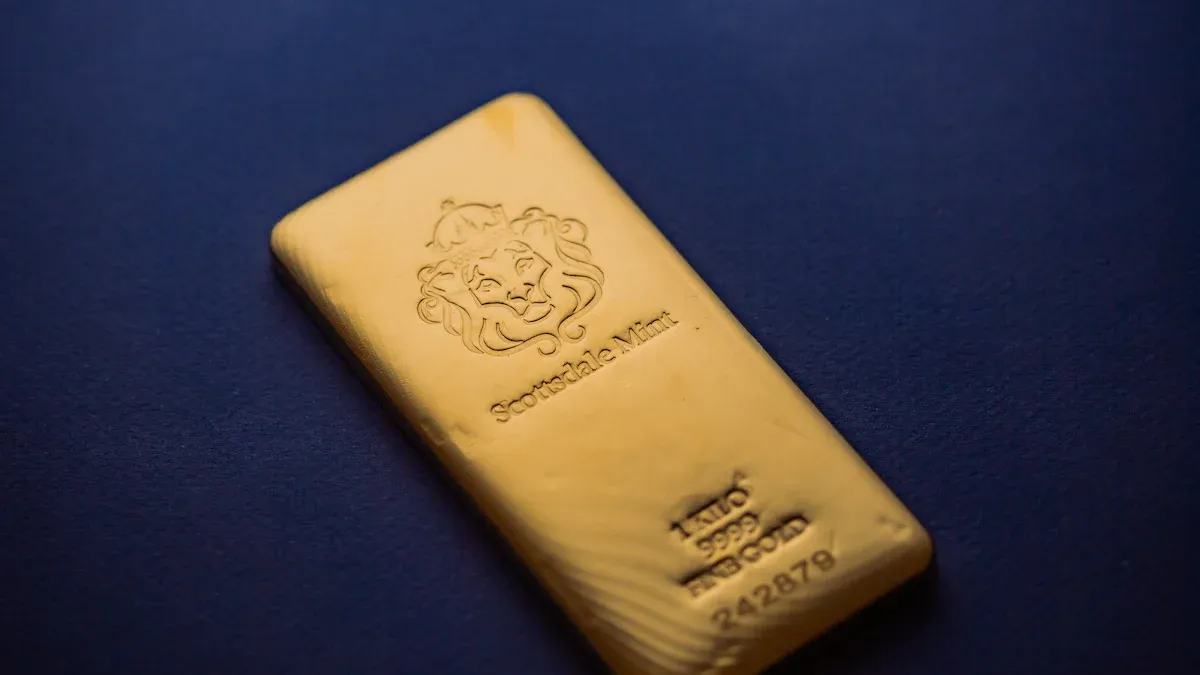
Visual Clues
You can often spot fake gold just by looking closely. Real gold has a warm, rich, and even color. It does not turn dark or show spots. If you see discoloration, tarnish, or patches of a different color, you may have a fake gold item. Genuine gold does not fade or peel, while gold-plated or faux gold jewelry often shows scratches or worn spots where the base metal appears.
Real gold has a uniform yellow color that is not too shiny or too dull.
Fake gold may look overly bright, have reddish or greenish tones, or show uneven coloring.
Scratches or peeling on the surface often reveal a different metal underneath.
Costume jewelry made from faux gold can lose its color quickly, especially if you wear it often.
Tipp: Always start with a visual inspection before trying other tests. This simple step can help you spot fake gold early.
Hallmark Codes
Hallmarks and stamps give you important clues about gold authenticity. Real gold jewelry usually has a small engraved mark showing its purity, wie zum Beispiel “14K,” “18K,” oder “24K.” These marks tell you how much pure gold is in the item. Some countries use special symbols or codes, wie die BIS logo in India, to certify gold purity and origin.
You may also see marks like “GF” (gold-filled), “GP” (vergoldet), oder “HGE” (heavy gold electroplate) on fake gold items. These codes mean the piece is not solid gold. Some counterfeiters try to copy real hallmarks, so always check for clear, sharp, and correctly placed marks.
Look for karat numbers (z.B., 14K, 18K, 24K) or purity marks (z.B., 585 for 14K).
Check for extra marks like the BIS logo, assay office stamp, or maker’s ID.
Research hallmark systems in your country to understand what each symbol means.
If you see faded, missing, or suspicious marks, you may have a fake gold item.
Notiz: You can use apps or official websites to verify hallmark codes and make sure they match the seller’s claims.
Skin Discoloration
Real gold does not react with your skin. If you wear a ring or necklace and notice green, black, or red marks on your skin, you are likely wearing fake gold or faux gold jewelry. This happens because base metals like copper or nickel react with sweat and air.
Costume jewelry and faux gold items often cause skin discoloration.
Gold-plated or gold-filled jewelry may also leave marks if the gold layer wears off.
Real gold is hypoallergenic and safe for most people.
Alarm: If your skin changes color after wearing jewelry, you should check if it is fake gold.
Magnettest
Gold is not magnetic. You can use a simple magnet to spot fake gold at home. Hold a strong magnet near your jewelry. If the item sticks to the magnet, it is likely made from a base metal or alloy, not real gold.
Real gold will not react to a magnet.
Fake gold, especially costume jewelry or faux gold, often contains metals that are magnetic.
Some fake gold items use non-magnetic metals, so this test is not always conclusive.
Tipp: Use the magnet test along with other methods for better results.
Weight and Sound
Gold is a very dense and heavy metal. When you hold real gold, it feels heavier than most fake gold or faux gold items of the same size. You can compare the weight of your item to a real gold piece if you have one.
Verfahren | Beschreibung | Worauf Sie achten sollten |
|---|---|---|
Compare the weight to the size; real gold feels heavy for its size. | Light items may be fake or filled with other metals | |
Ping Test | Tap a gold coin and listen for a clear, ringing sound that lasts 1-2 Sekunden. | Dull or short sounds suggest fake gold |
Professionals use sound waves to check for uniformity inside the metal. | Inconsistent results may reveal a counterfeit |
Real gold coins make a high-pitched, ringing sound when tapped.
Fake gold coins or bars often sound dull or flat.
Professional jewelers use ultrasonic machines to check for hidden metals inside.
Notiz: Weight and sound tests work best for coins and bars, but you can still use them for jewelry.
Feuerprobe
Der acid test is a reliable way to check if gold is real. You can buy a Goldtesting kit or visit a jeweler for this test. Always wear gloves and follow safety instructions.
Clean the gold item and scratch it on a testing stone to expose the metal underneath.
Apply a drop of acid that matches the gold karat you want to test.
Watch for a reaction:
No reaction means the gold is real for that karat.
Green or brown color means the item is fake gold or lower karat.
Dissolving or bubbling shows the presence of base metals.
Acid tests work well for most jewelry and coins.
Some fake gold items have thick plating that can fool surface tests, so scratch deep enough to reach the core.
Professional jewelers use advanced tools like Röntgenfluoreszenz (RFA) for more accurate results.
Alarm: Acid tests can damage your jewelry. Always test in a hidden spot or ask a professional for help.
At-Home and Professional Methods
You can use several at-home methods to spot fake gold, such as visual inspection, magnet test, weight check, and simple acid kits. These tests help you decide if you need a professional appraisal. Jewelers use advanced tools like ultrasonic testers, XRF -MaschineS, and fire assay testing to confirm gold authenticity. No single test is perfect, so use a mix of methods for the best results.
If you want to know how to tell if gold is real, start with easy tests at home and then seek expert help for valuable items. This approach protects you from buying fake gold, faux gold, or counterfeit pieces, especially when shopping for costume jewelry.
Quick Reference Table
Fake Gold Types and Features
You can use this quick reference table to compare fake gold types. This table helps you spot the main differences at a glance. If you want to check your jewelry or coins, look for these features.
Fake Gold Type | Common Hallmarks / Codes | Base Metal | Gold Layer Thickness | Haltbarkeit | Hauptmerkmale / Clues |
|---|---|---|---|---|---|
Gold-Plated | GP, GEP, HGE | Brass, Kupfer | ~0.5 microns | Niedrig | Thin gold layer, wears off, light weight |
Gold-Filled | GF, 1/20 14K GF | Brass | 5-10x thicker than plated | Medium | Thicker gold, can wear down, not solid gold |
Gold Vermeil | 925, Vermeil | Sterling Silver | ≥2.5 microns | Medium-High | Silver base, hypoallergenic, more durable |
Faux Gold Jewelry | Keiner | Brass, Kupfer, Plastic | Keiner | Niedrig | No gold, bright color, may cause skin marks |
Fool’s Gold (Pyrite) | Keiner | Pyrite Mineral | Keiner | Sehr niedrig | Brittle, greenish-black streak, light weight |
Brass/Copper Alloys | Keiner | Brass, Kupfer | Keiner | Niedrig | Tarnishes, green color over time |
Tungsten-Filled Gold | Fake real gold marks | Wolfram | Thin real gold layer | Hoch (core) | Very heavy, passes weight test, needs XRF |
Tipp: Always check for hallmarks and test the weight. Real gold feels heavy and does not tarnish or cause skin discoloration.
Key Points to Remember:
Gold-plated and gold-filled items use a base metal. They look shiny but wear out.
Gold vermeil uses real silver under the gold. It lasts longer and feels better on your skin.
Faux gold and brass jewelry often cause green or black marks on your skin.
Tungsten-filled gold feels heavy but needs special tests to confirm.
🧐 If you feel unsure, ask a jeweler to test your gold. This table gives you a fast way to compare and decide if your item might be fake.
You have learned how to spot fake gold types like gold-plated, gold-filled, vermeil, faux gold, and even tungsten-filled gold. Each type has unique clues, such as hallmarks, color, and weight. Use these tips to avoid scams and protect your money.
Scammers sometimes sell brass filings as gold dust.
Counterfeit coins often appear in the market.
Some sellers keep the gold and only offer fake documents.
If you feel unsure, ask a professional to check your gold, especially for expensive pieces.
FAQ
How can you tell if gold jewelry is fake at home?
You can check for hallmarks, use a magnet, and look for discoloration. Real gold does not stick to magnets or cause skin marks. If you see fading or scratches that reveal another metal, your jewelry is likely fake.
What do hallmark codes like GP, GF, or HGE mean?
These codes show your item is not solid gold.
GP: Gold Plated
GF: Gold Filled
HGE: Heavy Gold Electroplate
Real gold uses marks like 14K, 18K, or 24K.
Does fake gold always cause skin discoloration?
Fake gold often causes green or black marks on your skin. This happens when base metals react with sweat. Real gold does not cause skin discoloration. Some people may react to nickel in gold alloys, but pure gold is hypoallergenic.
Can you use vinegar to test gold zu Hause?
You can use vinegar for a quick test. Drop vinegar on your gold item. Real gold will not change color. Fake gold may turn green or brown. This test works best for small items and is not as reliable as an acid test.
Why does fake gold feel lighter than real gold?
Gold is a dense metal. Fake gold items often use lighter metals like brass or copper. When you hold real gold, it feels heavy for its size. If your jewelry feels light, it may not be real gold.

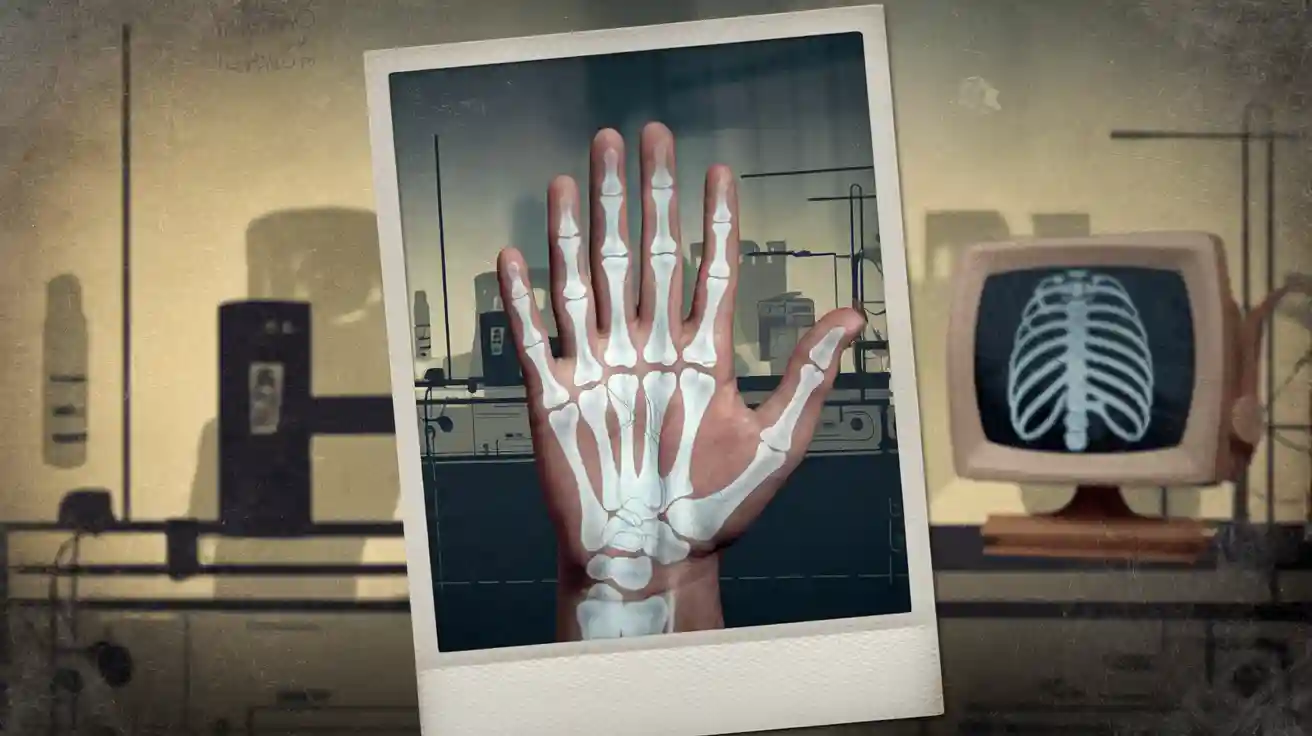

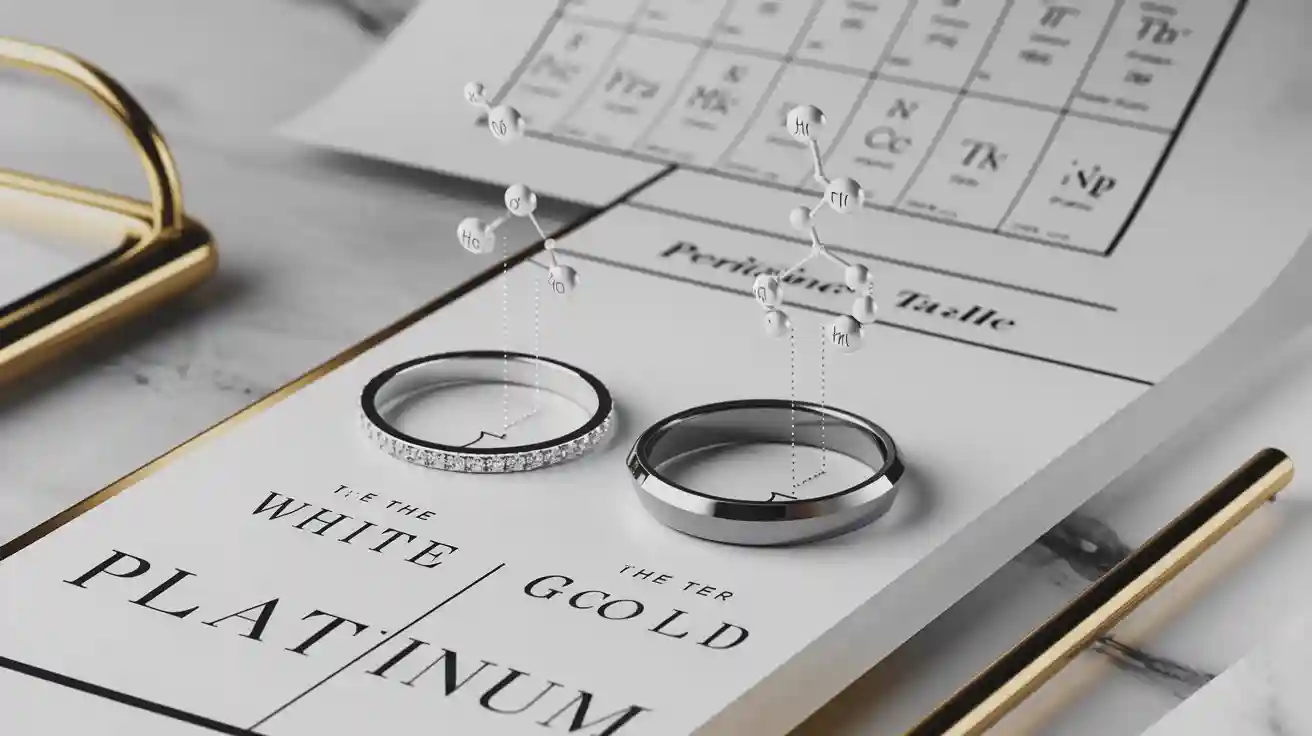

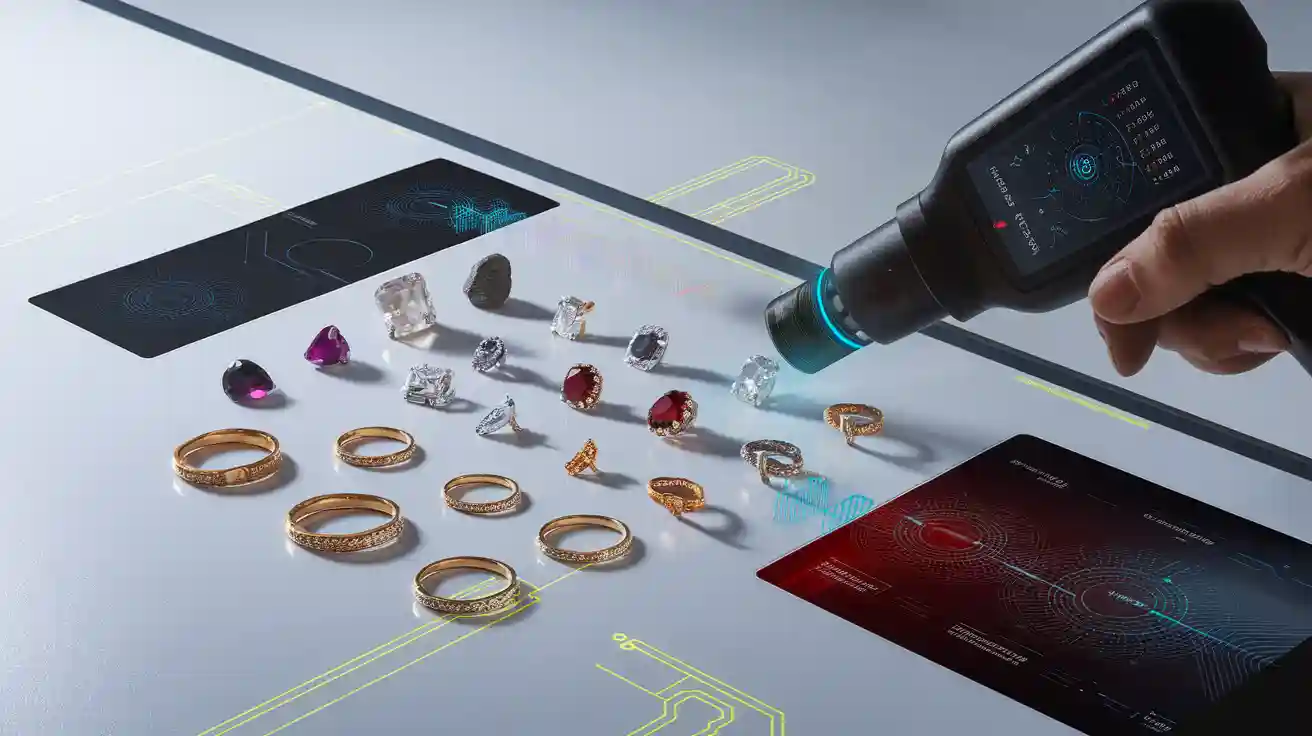

WhatsApp
Scannen Sie den QR-Code, um einen WhatsApp-Chat mit uns zu starten.